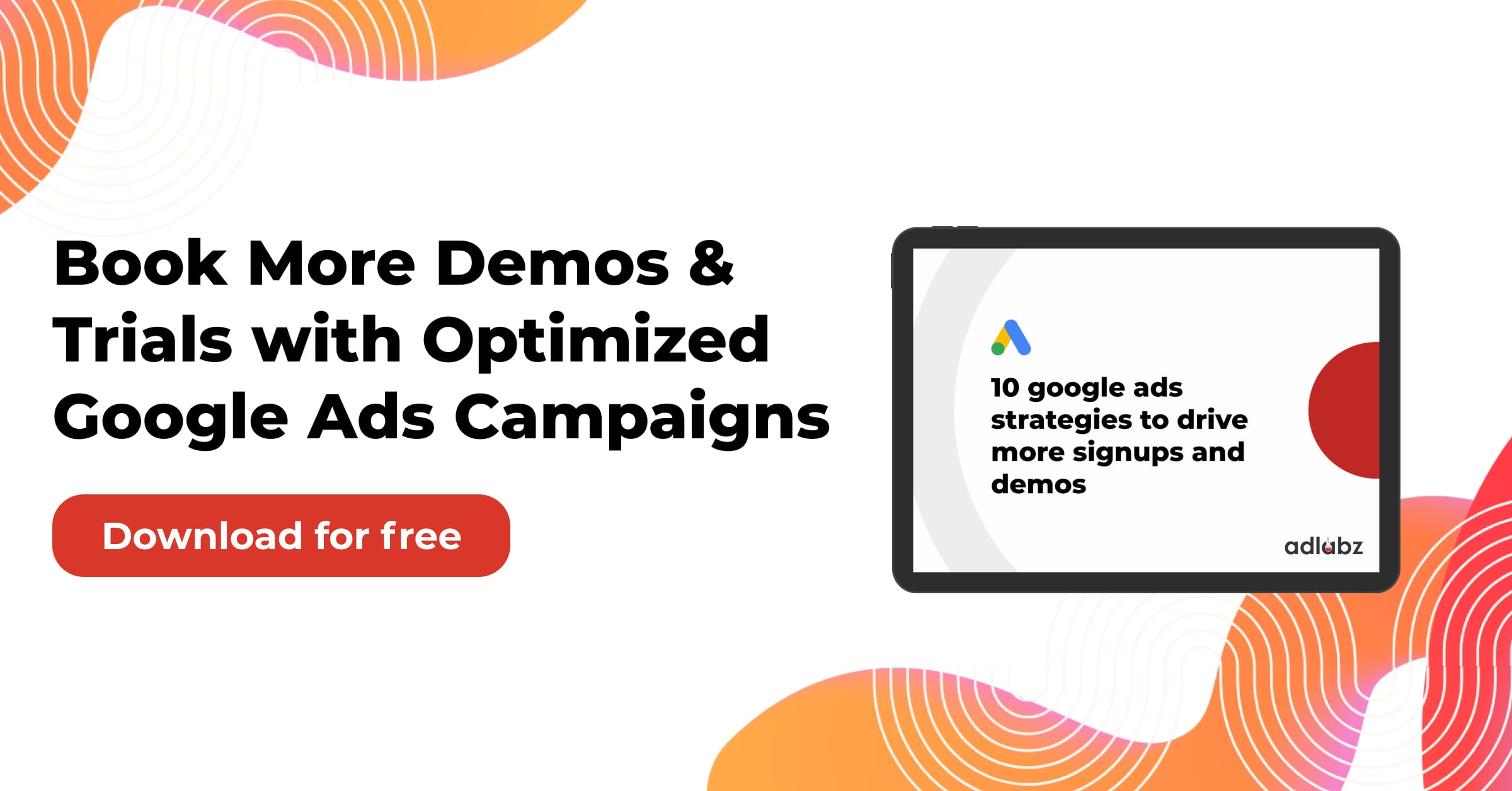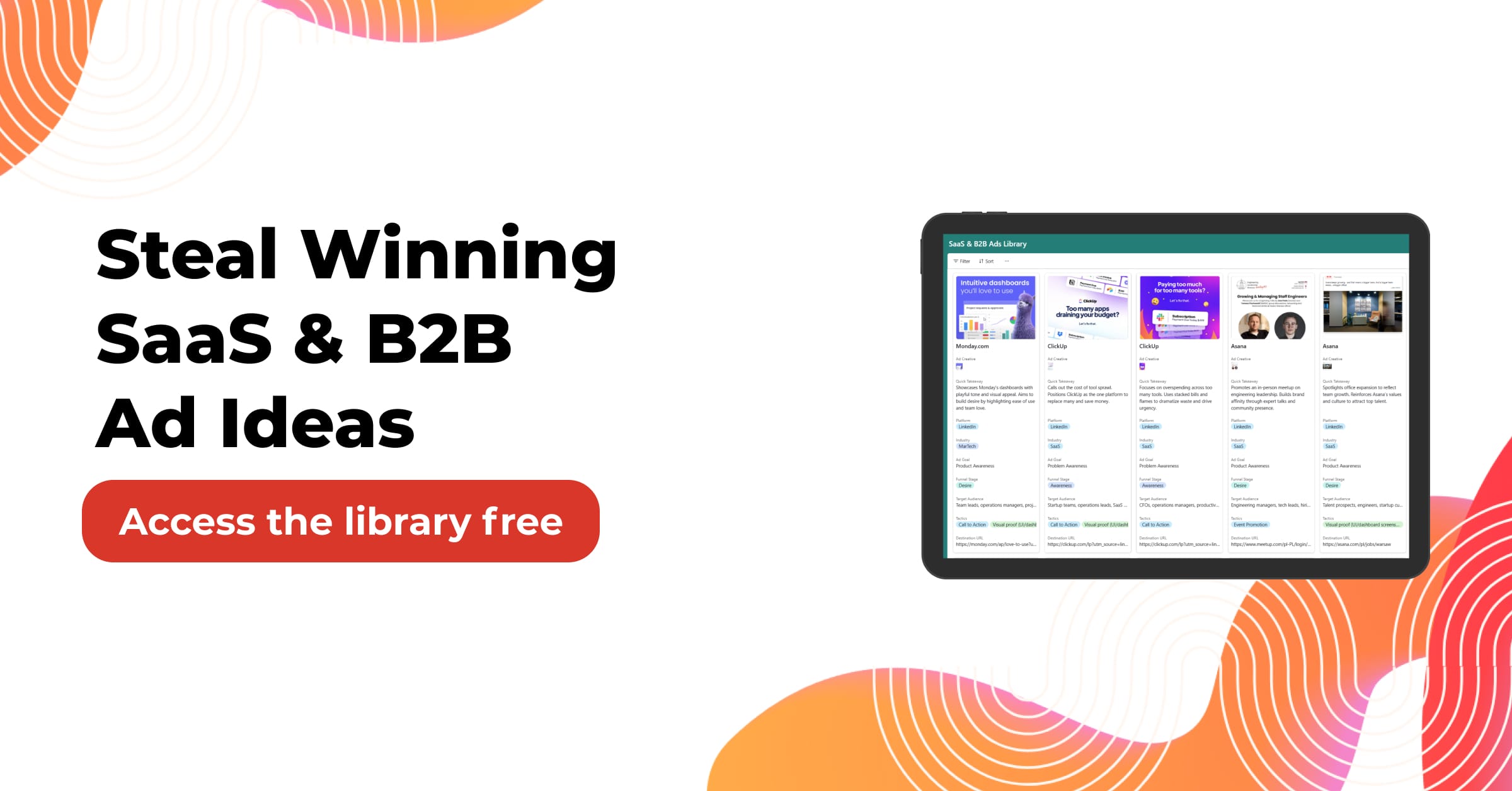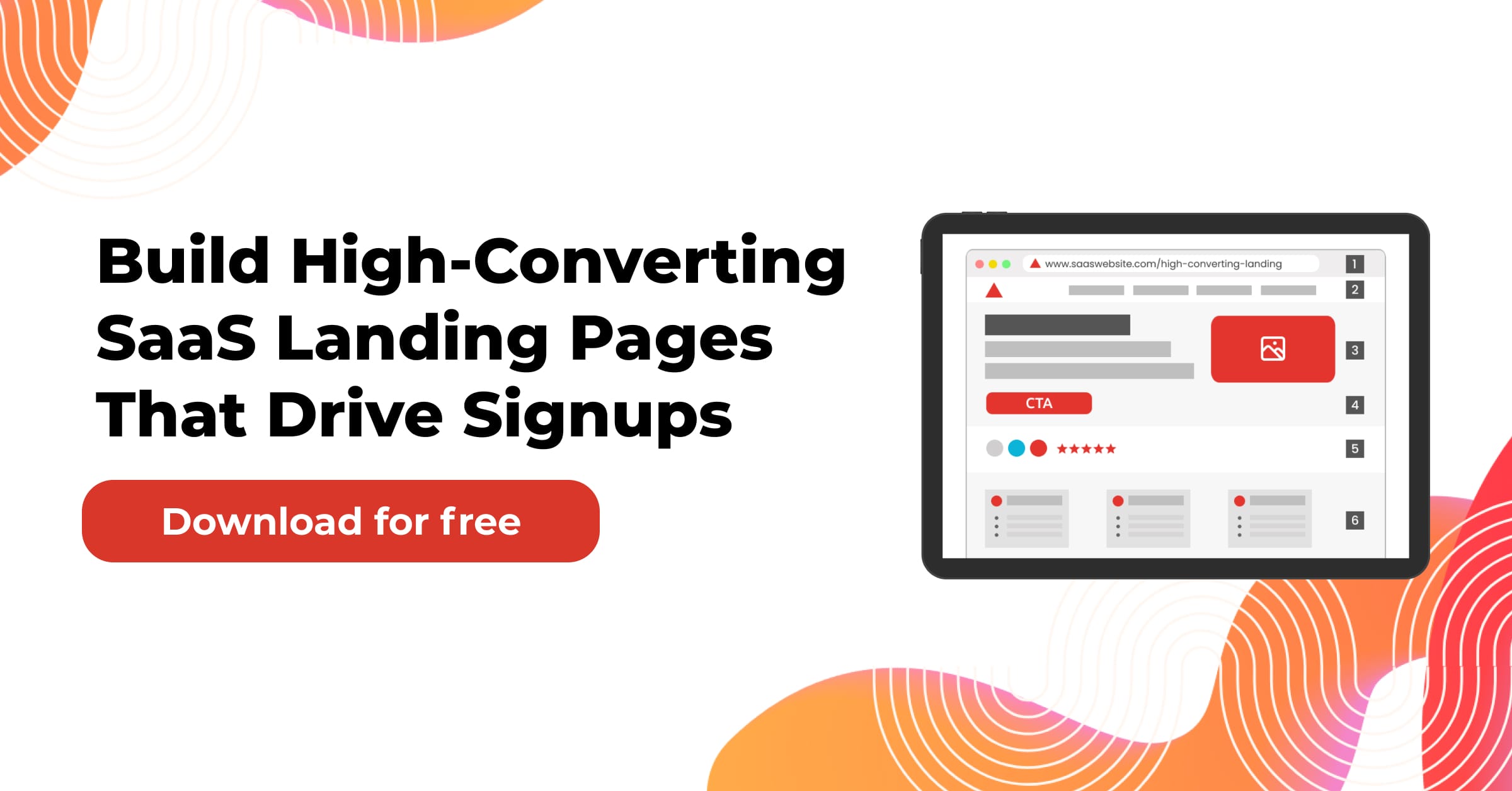Why Should You Care About Multi-Tenant SaaS?
If you are building or using cloud-based software, you have likely heard the term “Multi-Tenant SaaS.” For many founders and product teams, the choice of architecture feels technical and distant. But the reality is that your decision here impacts scalability, costs, and even customer experience.
Multi-tenant SaaS enables multiple customers to share the same application while maintaining their data separate and secure. Think of it like a modern apartment building. Tenants live under one roof, share the plumbing and electricity, but each has their own locked apartment.
Table of Contents
What Problem Does Multi-Tenant SaaS Solve?
Before cloud software, every company needed its own installation of an application. This meant high upfront costs, ongoing maintenance, and limited updates. Single-tenant systems still exist, but they require every customer to run their version of the software.
Multi-Tenant SaaS solves three major problems:
- It reduces costs by sharing infrastructure.
- It simplifies upgrades since changes are rolled out once.
- It ensures that customers get consistent performance and features.
Example: Imagine a CRM tool. In a single-tenant model, each company would run its own CRM instance. In a multi-tenant model, all companies use the same instance, but their data and workflows are isolated.
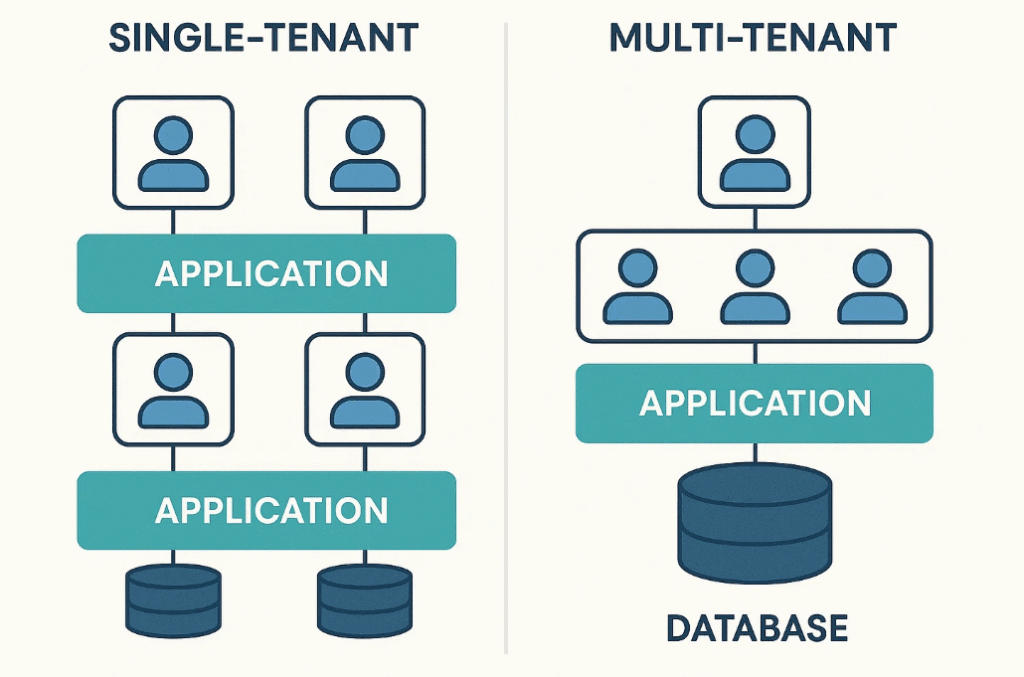
How Does Multi-Tenant SaaS Architecture Work?
At the heart of Multi-Tenant SaaS lies the database and application layer. The application code is shared among all users, but the data is partitioned so each tenant only sees their records.
There are three main approaches to data separation:
- Shared Database, Shared Schema – All tenants use the same database tables with tenant identifiers.
- Shared Database, Separate Schemas – One database, but each tenant has their schema.
- Separate Databases – Each tenant has their database, but still runs on the same application infrastructure.
Table: Approaches to Multi-Tenant SaaS Data Storage
| Approach | Pros | Cons |
|---|---|---|
| Shared Database, Shared Schema | Most cost efficient, easiest scaling | Harder to manage data isolation |
| Shared Database, Separate Schema | Balance between isolation and cost | Slightly more complex maintenance |
| Separate Databases | Strongest isolation, better for compliance | Higher costs, harder to scale fast |
What Are the Benefits of Multi-Tenant SaaS?
The rise of Multi-Tenant SaaS is not an accident. It offers real-world advantages:
- Cost Savings – Infrastructure is shared, lowering hosting expenses.
- Faster Upgrades – One deployment updates all tenants at once.
- Elastic Scalability – Resources can scale dynamically based on demand.
- Consistent Experience – All users benefit from the same performance improvements and bug fixes.
- Lower Maintenance – No need to manage separate codebases for every customer.
Example: Slack is a Multi-Tenant SaaS platform. When Slack introduces a new feature, it is instantly available to all workspaces.
What Are the Risks or Challenges of Multi-Tenant SaaS?
While the benefits are strong, Multi-Tenant SaaS also brings challenges.
- Data Security: Since tenants share infrastructure, strong isolation is critical.
- Customization Limits: Deep tenant-specific customization is harder in shared environments.
- Performance Contention: One tenant’s heavy workload can impact others if not managed.
- Compliance Concerns: Industries with strict regulations may prefer more isolated setups.
Example: A healthcare SaaS provider may face stricter compliance needs (HIPAA), which may require stronger isolation of patient data.
Related Article: https://www.adlabz.co/rise-of-saas-security-as-a-service-and-why-it-matters
How Does Multi-Tenant SaaS Keep Data Secure?
One of the top questions new customers ask is: If multiple companies use the same application, how is my data safe?
Multi-Tenant SaaS uses several layers of protection:
- Tenant Identifiers: Every record is tagged to ensure data does not leak.
- Access Control: Strict rules ensure users can only access their tenant’s data.
- Encryption: Data is encrypted both in transit and at rest.
- Monitoring: Continuous monitoring detects abnormal activity.
Related Article: https://www.adlabz.co/is-blockchain-the-future-of-saas-data-protection
Can Multi-Tenant SaaS Handle Customization?
Many businesses worry that shared systems limit customization. The truth is, modern architectures allow plenty of flexibility.
Ways SaaS platforms provide customization:
- Configuration Layers: Tenants adjust workflows, branding, and permissions without touching core code.
- API Extensions: Developers can extend functionality with integrations.
- Feature Flags: Features can be turned on or off per tenant.
Example: Shopify is a Multi-Tenant SaaS platform, yet each online store looks unique thanks to themes, plugins, and APIs.
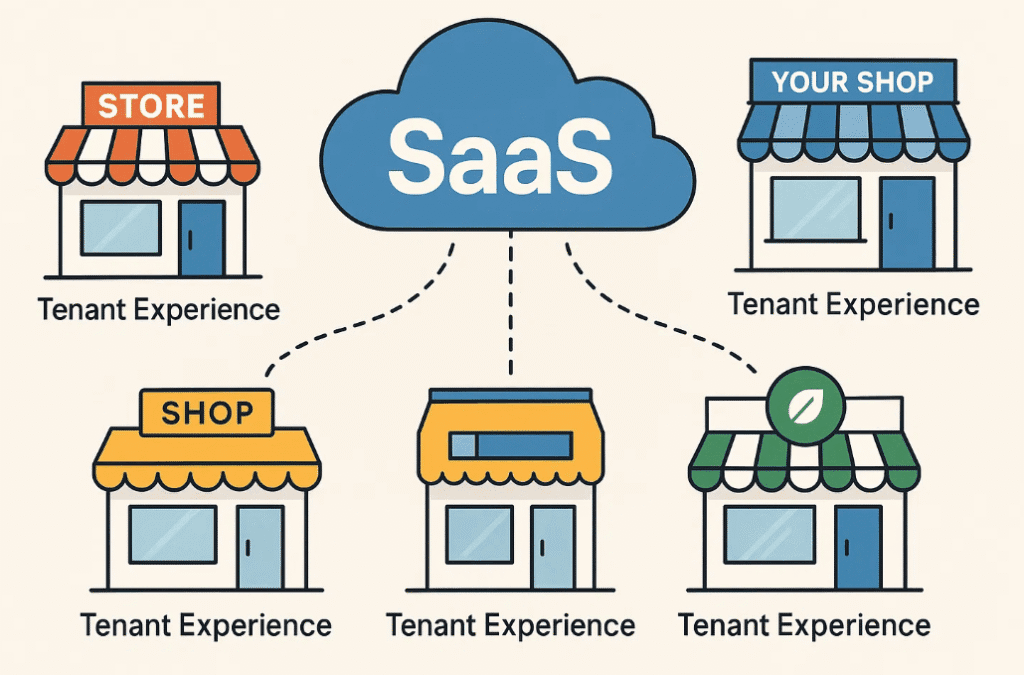
When Should You Choose Multi-Tenant SaaS Over Single-Tenant?
The decision often depends on your business model, compliance requirements, and budget.
- Choose Multi-Tenant SaaS if: You want fast scaling, shared costs, and consistent upgrades.
- Choose Single-Tenant if: You need maximum data isolation, deep customizations, or must meet strict regulatory rules.
Table: Multi-Tenant vs Single-Tenant
| Factor | Multi-Tenant SaaS | Single-Tenant SaaS |
|---|---|---|
| Cost | Lower | Higher |
| Upgrades | Instant across all tenants | Separate for each customer |
| Scalability | High | Moderate |
| Customization | Moderate | High |
| Security | Strong but shared | Maximum isolation |

What Are Real-World Examples of Multi-Tenant SaaS?
Some of the biggest SaaS names run on multi-tenant architecture:
- Salesforce – One of the earliest large-scale multi-tenant applications.
- Zoom – All users share the same app, but calls remain private.
- Slack – Shared infrastructure with isolated workspaces.
- Shopify – Shared system powering millions of unique stores.
These examples show that multi-tenancy can scale from small startups to global enterprises.
What Should Startups Consider Before Building Multi-Tenant SaaS?
For startups, the temptation is to build fast and worry about architecture later. But the wrong choice can create scaling headaches.
Key considerations include:
- Expected Growth – If you plan for many small customers, multi-tenancy reduces overhead.
- Regulatory Needs – Certain industries may require hybrid or isolated setups.
- Technical Skills – Designing secure multi-tenant systems requires careful planning.
- Long-Term Costs – Multi-tenancy usually saves money at scale, but early-stage costs may be higher due to complexity.
How Does Multi-Tenant SaaS Impact Business Growth?
From a business perspective, Multi-Tenant SaaS enables subscription models that scale efficiently. By lowering infrastructure costs and simplifying updates, SaaS providers can focus resources on growth, marketing, and customer success rather than repetitive maintenance.
Example: A startup building a learning management system can serve thousands of schools on one platform, without deploying separate instances for each. This allows faster onboarding and a more predictable cost structure.
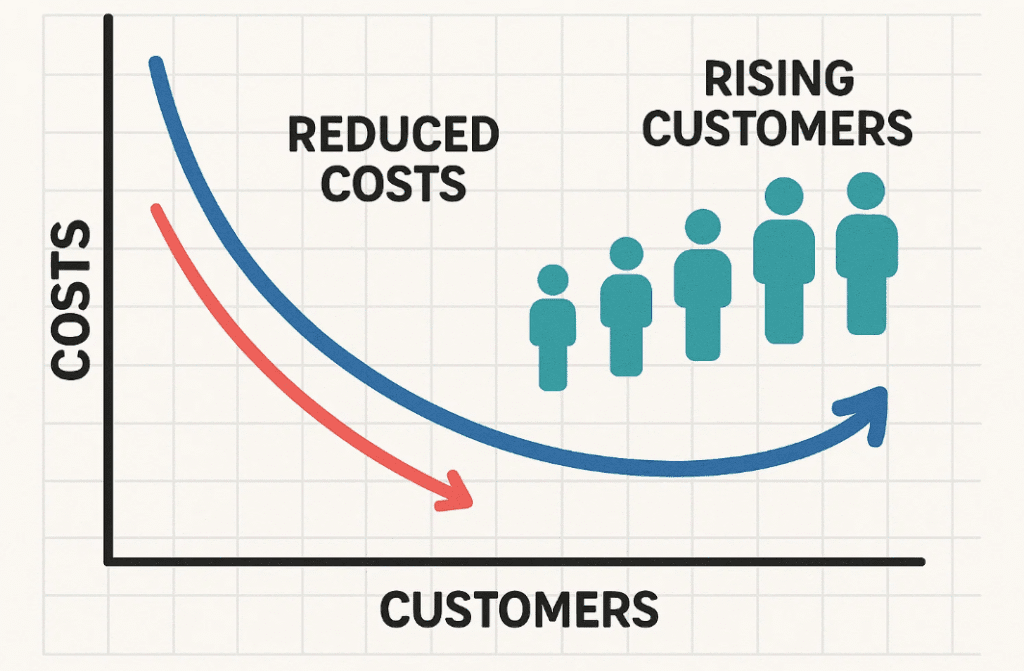
What Is the Future of Multi-Tenant SaaS?
As cloud technology matures, multi-tenancy will continue to evolve. Trends shaping the future include:
- Microservices – Breaking applications into smaller services for better flexibility.
- Serverless Computing – Dynamically scaling functions without worrying about servers.
- AI-Powered Automation – Smarter tenant management and predictive scaling.
- Hybrid Models – Combining shared infrastructure with isolated databases for balance.
How Does Multi-Tenant SaaS Impact Total Cost of Ownership?
One of the biggest selling points of Multi-Tenant SaaS is the cost savings compared to single-tenant or on-premise setups. But what exactly makes it cheaper in the long run?
- Shared Resources: Servers, storage, and networking are shared across tenants, lowering hosting costs.
- Centralized Maintenance: The provider maintains only one codebase, so updates and bug fixes are faster.
- Reduced IT Overhead: Customers do not need in-house teams to manage installations.
Example: A small HR SaaS platform using multi-tenancy may pay a fraction of the infrastructure cost compared to if every customer had their isolated instance.
Table: Cost Comparison Over 5 Years
| Cost Category | Multi-Tenant SaaS | Single-Tenant SaaS | On-Premise |
|---|---|---|---|
| Infrastructure | Low | Medium | High |
| Maintenance | Low | High | Very High |
| Upgrade Deployment | Automatic | Manual per client | Manual |
| Customer IT Support | Minimal | Moderate | High |
What Role Does Multi-Tenant SaaS Play in Scaling Globally?
If you are planning to serve customers worldwide, Multi-Tenant SaaS can be a game-changer.
Advantages for Global Expansion:
- Faster Onboarding: Customers anywhere in the world can start using your product instantly without long installations.
- Unified Infrastructure: Updates roll out globally, ensuring consistent features across regions.
- Localization: Providers can add language, currency, and compliance layers per tenant.
- Performance Management: With cloud load balancing, even tenants in different time zones get stable performance.
Example: Zoom scales across millions of users worldwide using a multi-tenant backbone that allows anyone to join a meeting without worrying about deployment.
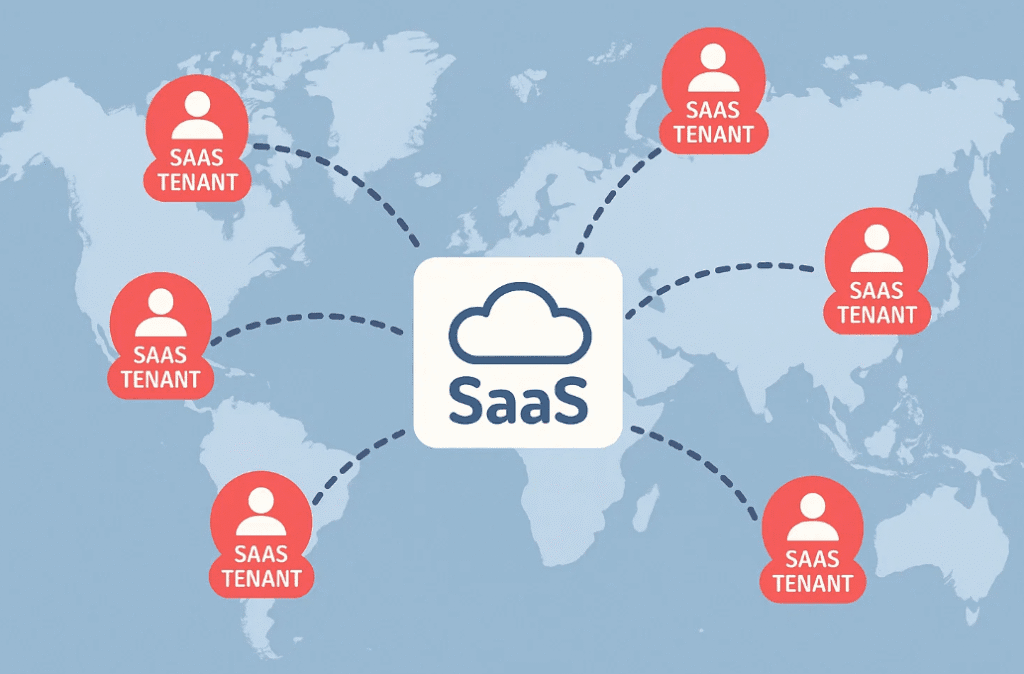
How Do Service Level Agreements (SLAs) Work in Multi-Tenant SaaS?
Customers often ask: If everyone shares the same system, how are guarantees like uptime and performance enforced?
Service Level Agreements in Multi-Tenant SaaS are standardized. This means every tenant signs up for the same reliability guarantees, such as 99.9% uptime. Providers use redundancy, failover systems, and real-time monitoring to meet these commitments.
Key SLA Metrics:
- Uptime percentage
- Response time for support
- Recovery time in case of failure
- Data backup frequency
Example: Salesforce provides consistent uptime guarantees to all tenants regardless of their company size.
How Does Multi-Tenant SaaS Enable Continuous Innovation?
Unlike traditional software, where customers may run outdated versions, Multi-Tenant SaaS ensures everyone is always on the latest release.
This allows providers to:
- Push new features instantly
- Fix bugs for all users at once
- Run A/B experiments across tenants
- Collect product feedback faster
Example: Slack can test new features with a subset of tenants, analyze the results, and then roll out improvements system-wide.
What Are the Best Practices for Designing Multi-Tenant SaaS?
For teams building SaaS platforms, following best practices ensures long-term stability and security.
- Tenant Isolation – Use strong database partitioning with tenant identifiers.
- Scalable Infrastructure – Build on cloud platforms that allow elastic scaling.
- Configurable Layers – Provide tenants with flexibility without code changes.
- Security First – Apply encryption, audit logs, and access controls from day one.
- Monitoring and Alerting – Track performance metrics for each tenant.
Table: Best Practices Checklist
| Category | Best Practice |
|---|---|
| Data | Partition and encrypt |
| Infrastructure | Use auto-scaling and redundancy |
| Customization | Provide configuration options |
| Security | Role-based access, audit logs |
| Monitoring | Track tenant-level performance |
What About Hybrid Multi-Tenant SaaS Models?
Some businesses combine multi-tenancy with single-tenant elements to balance cost and compliance. This is often called a hybrid model.
- Shared Application Layer, Separate Databases – Best for compliance-heavy industries.
- Shared Infrastructure with Isolated Regions – Tenants in different countries may need local servers.
Example: A healthcare SaaS company may run a multi-tenant architecture for general features but provide separate databases for hospitals to comply with regulations.
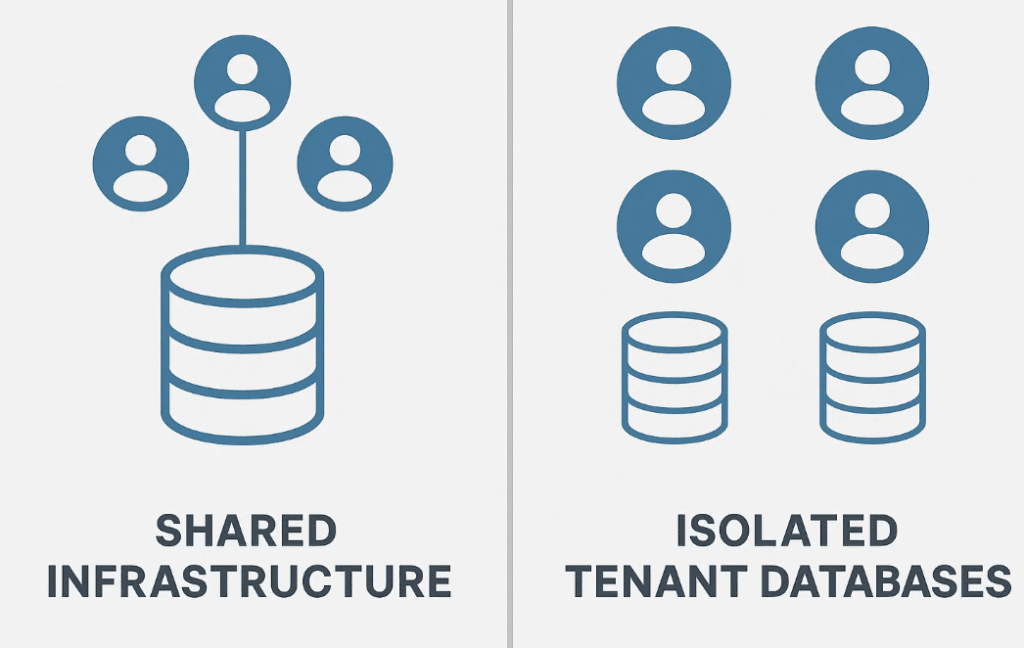
How Does Multi-Tenant SaaS Affect Customer Success Teams?
Customer success teams play a crucial role in SaaS adoption. Multi-Tenant SaaS changes its approach in positive ways:
- Centralized Analytics – Teams can analyze usage patterns across tenants.
- Faster Support – Since the product is consistent, support teams resolve issues faster.
- Proactive Engagement – Providers can detect early signs of churn by monitoring tenant-level engagement.
Example: A customer success manager at a project management SaaS may spot that one tenant’s usage is declining and can intervene with tailored training before the customer cancels.

How Do Pricing Models Work in Multi-Tenant SaaS?
Because Multi-Tenant SaaS reduces operating costs, providers can experiment with different pricing models:
- Per User Pricing – Charge per active user within a tenant.
- Tiered Features – Different plans unlock advanced functionality.
- Usage-Based – Pricing based on data storage, API calls, or transactions.
- Flat Rate – One subscription fee regardless of tenant size.
Table: Pricing Models
| Model | Pros | Cons |
|---|---|---|
| Per User | Scales with customer growth | Harder to predict cost |
| Tiered | Flexible for different needs | Can create upgrade friction |
| Usage-Based | Fair and scalable | Billing may feel unpredictable |
| Flat Rate | Simple to understand | May undercharge large tenants |
How Do You Monitor and Optimize Multi-Tenant SaaS Performance?
Since tenants share the same resources, performance monitoring is vital.
Techniques include:
- Resource Quotas – Prevent one tenant from using all resources.
- Load Balancing – Distribute traffic evenly across servers.
- Tenant-Level Metrics – Track CPU, memory, and query times per tenant.
- Scaling Policies – Automatically increase capacity during peak hours.
Example: A video conferencing SaaS may allocate extra server resources to tenants hosting large virtual events.
How Does Multi-Tenant SaaS Support Ecosystems and Integrations?
Modern SaaS is rarely a standalone tool. Businesses expect integrations with CRMs, ERPs, payment systems, and analytics platforms.
Multi-Tenant SaaS supports ecosystems by:
- Providing APIs for third-party developers.
- Offering app marketplaces where tenants can install add-ons.
- Using secure connectors for data synchronization.
Example: Shopify allows merchants to install thousands of third-party apps while still running on one shared SaaS platform.
Final Thoughts
The beauty of Multi-Tenant SaaS lies in balance. It offers cost efficiency, scalability, and continuous innovation while ensuring data security and tenant isolation. For most SaaS businesses, this model is not just a technical choice but a growth strategy.
By understanding the architecture, businesses can make better decisions about adoption, pricing, compliance, and long-term scalability. Whether you are a founder building a new platform or an enterprise evaluating vendors, Multi-Tenant SaaS will likely shape your future software journey.


